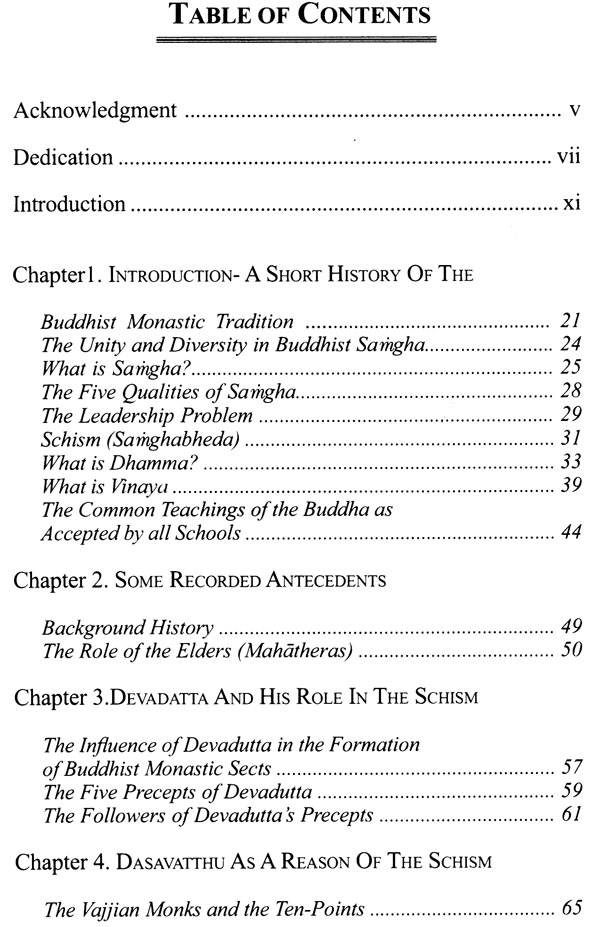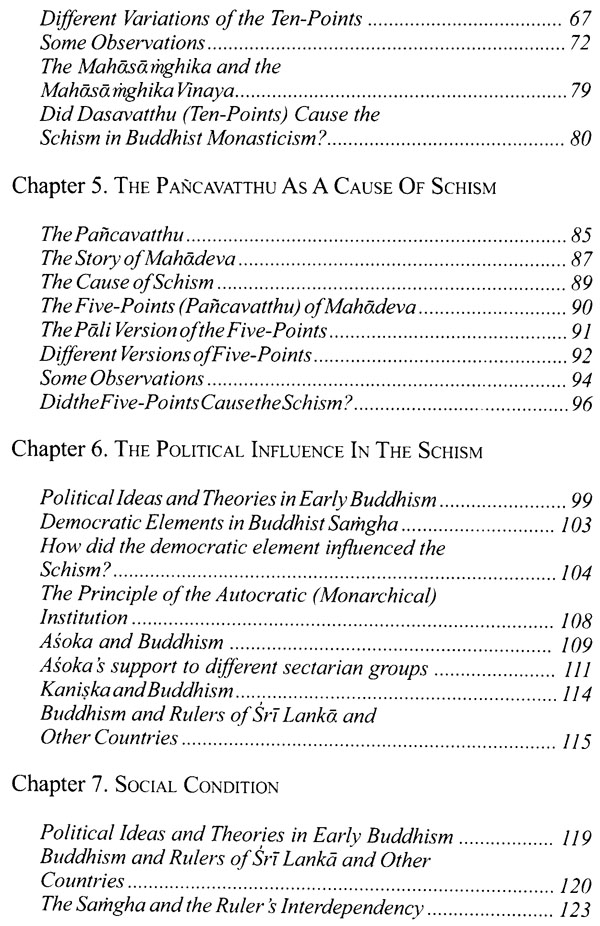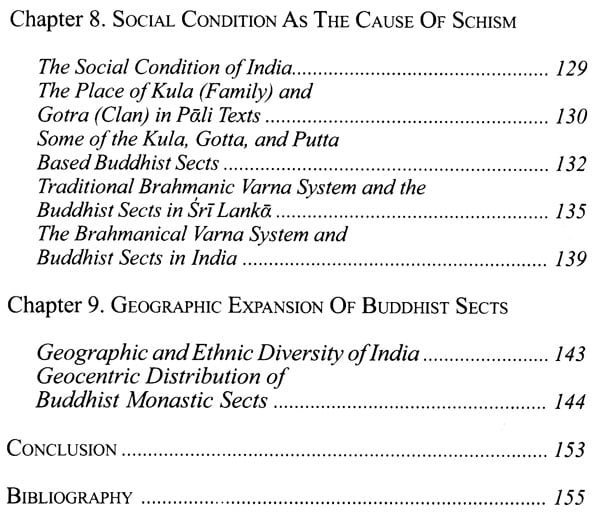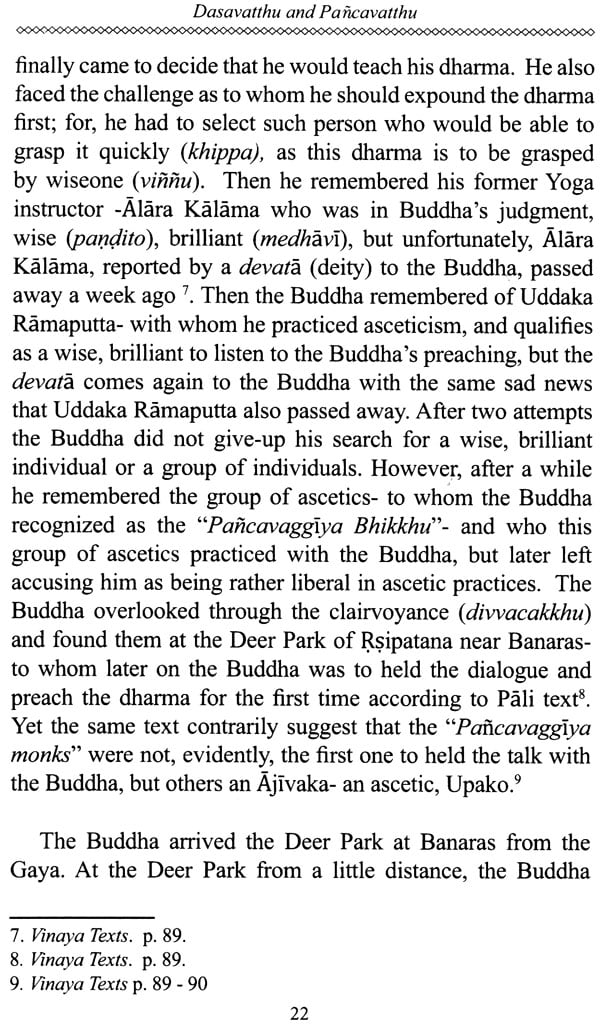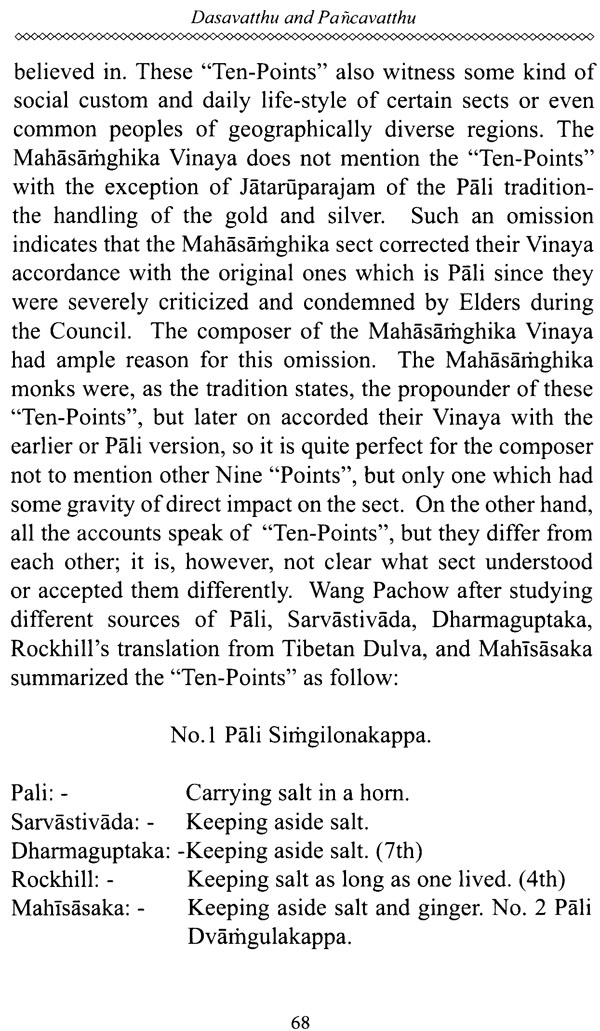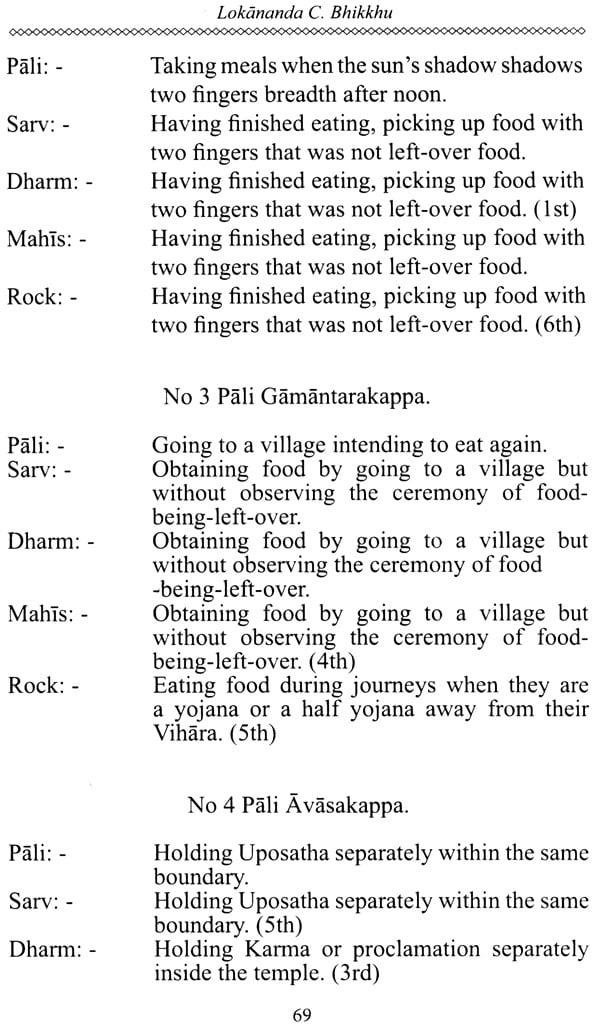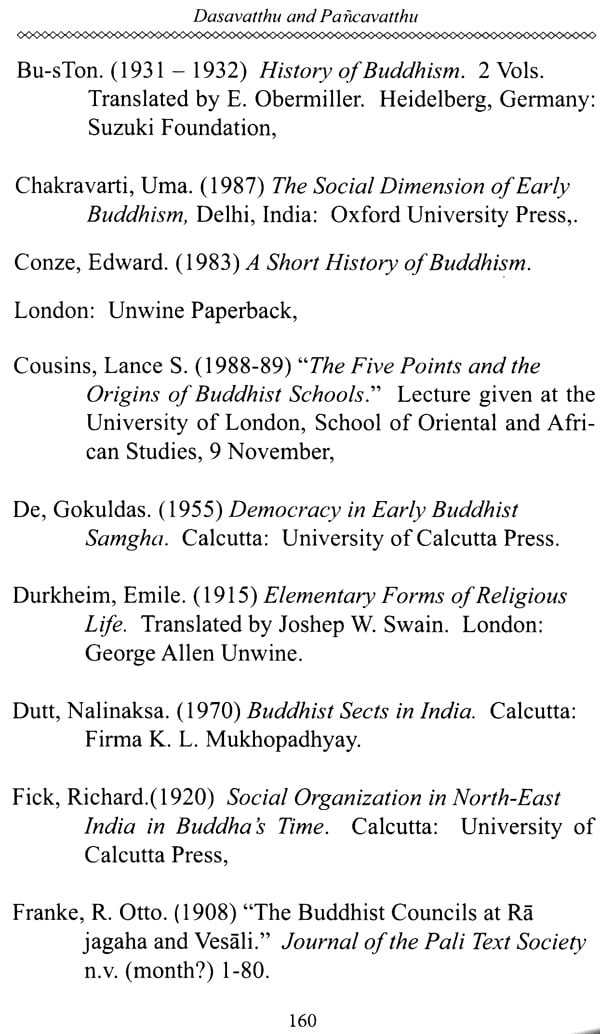
A Critical Study in the Schism in Early Buddhist Monastic Tradition
Book Specification
| Item Code: | NAW607 |
| Author: | Lokananda C. Bhikkhu |
| Publisher: | Motilal Banarsidass Publishers Pvt. Ltd. |
| Language: | English |
| Edition: | 2019 |
| ISBN: | 9788194011132 |
| Pages: | 164 |
| Cover: | PAPERBACK |
| Other Details | 8.50 X 5.50 inch |
| Weight | 170 gm |
Book Description
This is the modified version of my M.A. thesis - titled Dasavatthu and Pancavatthu: A Critical Study in the Schism in Early Buddhist Monastic Tradition, which I submitted to the Department of Asian and Asian-American Studies, California State University-Long Beach in 1992. After long laps of time, I decided to circulate it in electronic media - https://www. academia.edu for others reading pleasure. Since then I noticed that a number of people have visited that web-page and that a number of users (perhaps from academic circle) have used it as reference resource or cited from it in supportive evidence or as opposed to their academic argument. However, whatever pro or con argument could have been, it does not matter to this author, but what matters to him is that certain readers enjoyed reading it or benefitted by using it. Hence, some of my friends suggested me to bring it out as a book, which first, I was apprehensive to do that, but later realized that it could have been a nice idea to bring it out as a book not for financial gain, but for academic advancement in the field. In 2017, it was published by the First Design Publishers in Florida, United States (Print on Order) as the Split in the Samgha: How did it happen? I thought I should bring another addition with its original title as it is now.
The theme of this study fascinated me since I was an undergraduate student in the University of Sri Lanka. Later, while pursuing my graduate studies in the University of California-Los Angeles (UCLA), I wrote a short term paper for Prof. Stanley Wolpert who encouraged me to continue on this topic. Once in Bunche Hall (UCLA) Dr. A. L. Basham - the distinguished Indologist, who was answering to a question, after a long lecture pin-pointed to us that there were socio- political influence over the Buddhist monastic tradition since there were numareous members in the Buddhist Sarngha from different racial groups as various rulling families played an important part in Buddhism as well. This led me to undertake further studies on it; the result was my MA thesis.
The purpose of this study was as to examine how and why the Buddhist monastic tradition split first, into, two major sects as Sthaviravada and Mahasamghika, and later on each sect split into multiple sub-sects as traditional counts runs as eighteen sects (astadasanikzyay). However, what was the main reason or reasons for this split, or when, at what time and date such split occured? Wilhelm Geiger observed the first split and the reason for the first split. Thus he states:
It is historically confirmed, I think, that the first schism in the Church proceeded from Vesali and that the dasavatthuni of the Vajji-monks brought it about. But it is doubtful when this separation resulted, where it took place, and whether after this Second Council yet a third took place and at what time'.
Geiger pointed out that it was because of the dasavatthuni (Ten- Points) the split took place; but did he forget or ignore the pancavaithuni (Five-Points)? If Geiger forgot the pahcavatthu, then does it means that the pahncavatthu was not in the disputed scene! A clear explanation is still lacking. There are several academic and non-academic monographs, articles, books and studies done by various qualified individuals, but still none these studies could provide an exact conclusion as to why the split occurred. However, each major sect kept its own record. Perhaps from the Pali Buddhism standpoint the Cullavagga (especially Chapters XI and XII) and a commentarial work - the Dhammapadatthakatha, Majjhima Niksya (Kosambiya Sutta) , Mahavagga (kosambi kkandha)2 are the earliest records of this dispute; and the Cullavagga provides a detail reason, which is known as dasavatthu (Ten Points) for this split, but from the Sanskrit Buddhism standpoint, there is another reason known as pancavatthu (Five Points) opposing the dasavatthu, which is also taken as the main reason for this split. Unfortunately, any earliest document in Sanskrit is unbeknownst to this author. The well-known Belgian Buddhologist Louis de La Vallee Poussin while investigating the subject found the parallel of the Sanskrit Five-Points (pancavatthu) in the Pali Abhidharmic literature - the Kathavatthuppakarana. However, both these alleged reasons lead Buddhologists to examine the origins of both dasavatthu and paitcavatthu. Then the examination of these two issues led again to examine the origin of the Second Buddhist Council, which was held in Vaisall; because the beginning of both these split disputes - dasavatthu or pancavasthu, said to be the time periods of the Second Buddhist Council.
**Contents and Sample Pages**
